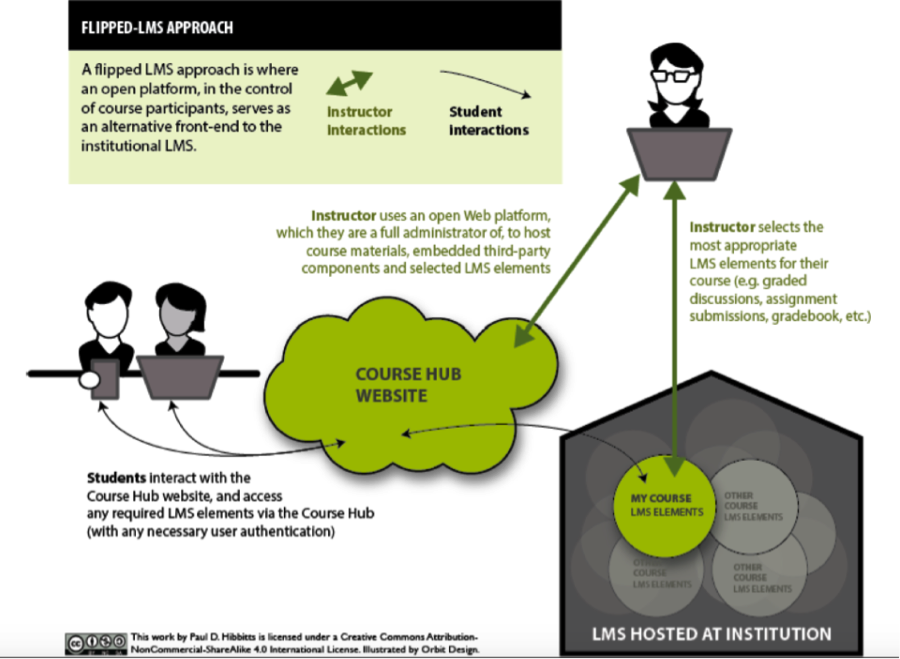[T.e.l.l. March Summary] Flip It Good! Flipping the LMS with an Open and Collaborative Platform
Contributed by Brett Griffiths, VCC
On March 22, Paul Hibbitts from SFU presented an excellent T.E.L.L. session entitled “Flipping the LMS with an Open and Collaborative Web Platform.”
Paul indicated he began teaching with Canvas in 2014, but discovered that he wasn’t able to shape the LMS into a form that worked well for his course. While looking for ways to make his course landing page better he came across Grav (https://getgrav.org/), an open source flat-file CMS. The advantages of using a flat-file CMS were:
- No database, so little or no IT involvement needed
- Increased portability, moving a site only involved copying files to another location
- Takes advantage of a collaborative ecosystem (GitHub, GitLab)
Why flip the LMS? Paul suggested the following reasons: (a) to support pedagogical goals unmet by your current LMS, (b) to deliver a better student (and facilitator) experience, and (c) to increase capability to access, sharing and collaboration.
When creating the course hub Paul had the goals of:
| For Students | For Facilitators |
| · Engaging | · Controllable |
| · Organized | · Pliable |
| · Relevant | · Efficient |
| · Convenient | · Enjoyable |
| · Enjoyable |
What to flip your LMS with? Paul suggests an open and collaborative platform such as Grav CMS. Additionally, by leveraging a version control system such as GitHub (https://github.com/) you can have full control over the Grav Course Hub, and allow your students to participate by making suggestions to the Course Hub, which can then be reviewed by the instructor and either, accepted or rejected.

What did students think? When asked what is they would like to see the overall Course Hub design used in other courses 81.5% said yes, 12.5% said no, and 6% were undecided. A large majority of those who indicated no preferred not leaving the LMS.
Paul found there were three critical design issues to consider when flipping the LMS. Those were: (a) transition between the alternate front-end and LMS needs to be as frictionless as possible, (b) the overall student and instructor experience needs to be significantly better, and students should only need one URL for the course.
To create your own flipped LMS using Grav you will need some basic knowledge of HTML or markdown language (https://en.wikipedia.org/wiki/Markdown), knowledge of a simple text editor and how to access a webserver via FTP. Updating your website can be as easy as opening a simple text editor and copying or moving files. Updates could potentially be done in less than 30 seconds.
To get started Paul has created some downloads and tutorials to get you up to speed quickly. These can be accessed at http://hibbittsdesign.org/blog/. Additionally, he has also created an online demo, which can be viewed at http://demo.hibbittsdesign.org
Some of highlights of Paul’s Course Hub package include:
- A complete ready-to-run Grav Skeleton Package (open source)
- Blog format, with “featured” (sticky) posts
- Important class reminders and preparation areas
- External links are automatically opened in a new Tab/Window
- Mobile device compatible
For more information see: http://hibbittsdesign.org/blog/
Slides
Recording no longer available


